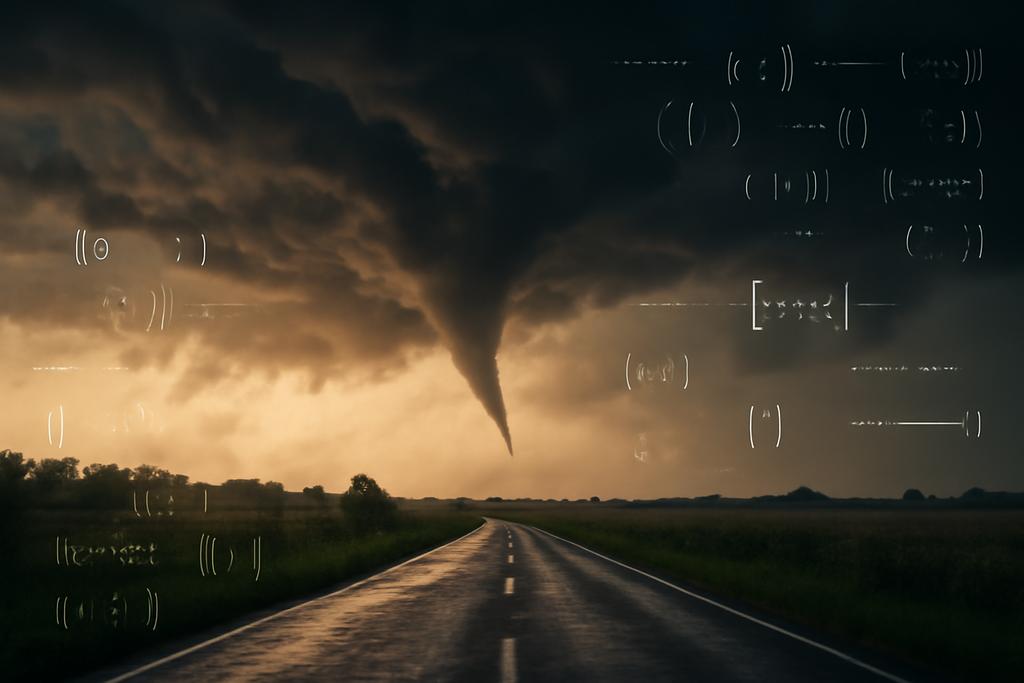Forecasting the future often feels like trying to predict the weather in a storm—complex, noisy, and full of surprises. Yet, from climate models to cryptocurrency prices, our world increasingly depends on accurate predictions of time series data: sequences of measurements evolving over time. A team of researchers from the Helmholtz Center for Environmental Research in Germany, Delft Center for Systems and Control in the Netherlands, and the University of Pittsburgh in the US have unveiled a new approach that blends the raw power of modern AI with the mathematical elegance of dynamical systems theory. Their creation, DeepKoopFormer, promises forecasts that are not only sharper but also more stable and interpretable.
Why Forecasting Feels Like Wrestling Chaos
Time series forecasting is everywhere—from anticipating energy demand and tracking financial markets to predicting wind speeds for renewable power. Traditional statistical methods often stumble when faced with high-dimensional data or nonlinear dynamics, where variables twist and turn unpredictably. Deep learning models, especially Transformers, have recently taken center stage by capturing long-range dependencies in data. But these models come with their own baggage: they can be black boxes, sensitive to noise, and sometimes unstable when projecting far into the future.
Imagine trying to forecast a chaotic system like the weather or a turbulent financial market. The underlying rules are nonlinear and complex, and small errors can quickly snowball. This is where the DeepKoopFormer steps in, marrying the flexibility of Transformers with a century-old mathematical concept known as the Koopman operator.
The Koopman Operator A Secret Linear Lens on Nonlinear Worlds
At first glance, the Koopman operator might sound like arcane math jargon. But its essence is surprisingly intuitive. It offers a way to look at nonlinear, complicated systems through a linear lens—by focusing not on the system’s states themselves but on functions of those states. This shift allows us to apply linear tools to understand and predict nonlinear dynamics.
DeepKoopFormer leverages this by embedding the input time series into a latent space using a Transformer encoder. In this latent space, the system’s evolution is modeled as a linear transformation governed by a Koopman operator. This operator is carefully constrained to ensure stability: its spectral radius (a measure of how much it can amplify signals) is kept below one, guaranteeing that predictions don’t spiral out of control over time.
Stability and Interpretability Without Sacrificing Power
One of the standout features of DeepKoopFormer is its modular design: an encoder to learn representations, a propagator that evolves these representations linearly via the Koopman operator, and a decoder that maps back to the original data space. This separation not only improves interpretability but also allows the model to maintain stability even when faced with noisy or uncertain data.
To further tame the latent dynamics, the researchers introduced a Lyapunov-inspired regularization. Think of it as a gentle hand that discourages the model from amplifying energy in the latent space, smoothing out transient spikes and ensuring the system’s behavior remains well-behaved during training and forecasting.
Putting DeepKoopFormer to the Test
The team rigorously evaluated DeepKoopFormer across a spectrum of challenging datasets. Synthetic nonlinear systems like the Van der Pol oscillator and the chaotic Lorenz attractor tested the model’s ability to capture complex dynamics under noise. Real-world datasets spanned climate variables (wind speed and surface pressure over Germany), volatile cryptocurrency prices, and electricity generation from diverse energy sources.
Across the board, DeepKoopFormer variants consistently outperformed traditional LSTM models and even standard Transformer architectures. Notably, the Koopman-enhanced PatchTST and Informer backbones excelled in capturing fine-scale fluctuations and maintaining accuracy over long forecast horizons. The model’s robustness to noise and distribution shifts was evident, a crucial advantage for real-world deployment.
Why This Matters Beyond the Lab
Forecasting is not just an academic exercise—it underpins decisions in energy management, finance, climate adaptation, and beyond. Models that are accurate but unstable or opaque can lead to costly mistakes or missed opportunities. DeepKoopFormer’s blend of theoretical guarantees and empirical performance offers a pathway to trustworthy, interpretable forecasts that can inspire confidence in high-stakes settings.
Moreover, by embedding physical and dynamical priors into deep learning architectures, this work bridges the gap between data-driven AI and classical scientific modeling. It’s a step toward AI systems that don’t just fit data but understand the underlying processes, opening doors to better control, anomaly detection, and scientific discovery.
Looking Ahead
The researchers envision extending DeepKoopFormer to handle irregular time series, spatiotemporal graphs, and control tasks, further weaving dynamical systems theory into the fabric of AI. As our world grows ever more complex and data-rich, such principled approaches will be vital in turning torrents of data into clear, actionable insights.
In a landscape crowded with black-box models, DeepKoopFormer shines as a beacon of clarity—showing that sometimes, the best way to predict chaos is to find the hidden order within.










